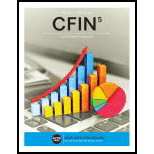
Marginal Cost of Capital (MCC) is the weighted average cost of capital for the last dollar raised in new capital. MCC of the company remains constant for some time after which it increases. This depends on the amount of additional capital raised and eventually increases as the cost of raising new capital is higher due to flotation cost. This is mostly evident in case of
Marginal cost of capital is calculated as below:
Proportion of debt in the target capital structure “
Proportion of
Proportion of common equity in the target capital structure “
After tax cost of debt, preferred stock, retained earnings and new equity is “
Breakpoint is the value of the new capital that can be raised just before an increase in the firm’s weighted average cost of capital.
The company is evaluating four independent projects, each having the cost of $214,000. IRR for project 1,2,3 and 4 are 19%,15%,18%,14%. WACC is 11% up to $520,000, 12.5% from $520,000-745,000 and increases to 15.2% when above $745,000
Want to see the full answer?
Check out a sample textbook solution
Chapter 11 Solutions
CFIN (with Online, 1 term (6 months) Printed Access Card) (New, Engaging Titles from 4LTR Press)
- finance subjectarrow_forwardCould you help explain, what is the complete salary survey analysis, and ensuring the data is relevant and up-to-date? What is the job evaluation and compensation plan? How to ensure the final report is comprehensive, clearly structured, and aligned with the company vision?arrow_forwardThe maturity value of an $35,000 non-interest-bearing, simple discount 4%, 120-day note is:arrow_forward
- Carl Sonntag wanted to compare what proceeds he would receive with a simple interest note versus a simple discount note. Both had the same terms: $18,905 at 10% for 4 years. Use ordinary interest as needed. Calculate the simple interest note proceeds. Calculate the simple discount note proceeds.arrow_forwardWhat you're solving for Solving for maturity value, discount period, bank discount, and proceeds of a note. What's given in the problem Face value: $55300 Rate of interest: 10% Length of note: 95 days Date of note: August 23rd Date note discounted: September 18th Bank discount rate:9 percentarrow_forwardAll tutor giving incorrect solnarrow_forward
 EBK CONTEMPORARY FINANCIAL MANAGEMENTFinanceISBN:9781337514835Author:MOYERPublisher:CENGAGE LEARNING - CONSIGNMENTPrinciples of Accounting Volume 2AccountingISBN:9781947172609Author:OpenStaxPublisher:OpenStax College
EBK CONTEMPORARY FINANCIAL MANAGEMENTFinanceISBN:9781337514835Author:MOYERPublisher:CENGAGE LEARNING - CONSIGNMENTPrinciples of Accounting Volume 2AccountingISBN:9781947172609Author:OpenStaxPublisher:OpenStax College Intermediate Financial Management (MindTap Course...FinanceISBN:9781337395083Author:Eugene F. Brigham, Phillip R. DavesPublisher:Cengage Learning
Intermediate Financial Management (MindTap Course...FinanceISBN:9781337395083Author:Eugene F. Brigham, Phillip R. DavesPublisher:Cengage Learning



